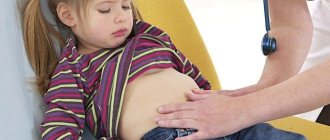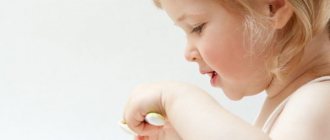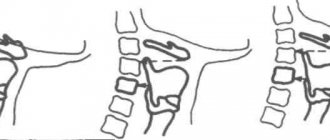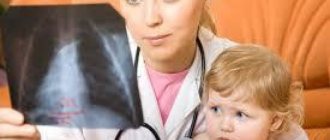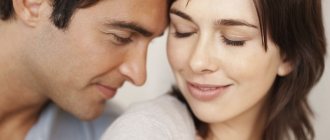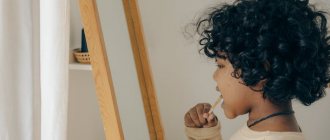Causes of alopecia in children
Most often, the development of this disease is caused by hereditary and congenital pathologies, sudden weight loss, surgical interventions, deficiency of folic acid and vitamin B12, general intoxication of the body, trauma to the hair follicles, weak immunity, and stress. Source: E.V. Maslova, O.N. Pozdnyakova Structure and clinical variants of alopecia in the practice of a dermatovenerologist // Journal of Siberian Medical Sciences, 2012, No. 2
Also leading to partial or complete baldness are:
- disruptions in the functioning of the nervous and endocrine systems;
- neurological disorders;
- head injuries;
- bad habits: pulling your hair, twirling it around your finger, etc.;
- skin inflammation in the hair growth area;
- some common infectious diseases;
- taking antibiotics;
- infection with worms;
- diabetes;
- nutritional deficiency;
- Iron-deficiency anemia;
- excess vitamin A in the body;
- exposure to x-rays;
- rickets;
- ringworm;
- and etc.
You can group the causes of this disease by age :
- in infants this may be rickets, increased mobility, as a result of which the child constantly rubs against the pillow;
- at the age of 1-2 years, focal baldness is caused by bad habits. Usually children pull their hair and twirl it around their finger. If behavior does not change before the age of 4, you should consult a psychologist;
- over the age of three, children actively adapt to society, so they often become infected with infections and fungal spores;
- going to first grade causes severe stress, heavy loads negatively affect the immune system, as a result of which alopecia also occurs;
- the next “turning point” period is adolescence, when hormonal levels are rearranged. This also serves as a negative factor.
Signs associated with cutting hair in children
For what reason is it generally accepted that children under one year of age are prohibited from cutting their hair? Probably, such a belief has come to us since pagan times. All of them attached great importance to hair, being confident that hair connects a person with higher powers. Babies under one year old are extremely vulnerable, which is why they thought that cutting their hair would deprive them of birth support and would negatively affect their well-being.
It is known that signs, passing through centuries, tend to change. That is why in a number of regions grandmothers now say that when cutting the hair of children under one year old, parents are “cutting off their luck,” and in the future such a child will never be happy. It is logical that parents do not want the baby to feel bad later, so they prefer to agree with the opinion of grandmothers, even if they themselves do not believe in omens and are educated.
Whereas the custom of cutting a baby's hair bald at the age of one is explained as follows. It was believed that the child had passed a certain milestone in life, so he was shaved. In addition, people believed that shaving would make hair grow even thicker and more beautiful. And this was especially important for girls, whose thick braids were considered the main feminine adornment.
Diagnosis of the disease
If adult family members or your pediatrician notice signs of alopecia, you need to understand why your hair is thinning. For this purpose, extensive diagnostics are carried out. To treat alopecia, a child should first visit the following pediatric specialists:
- dermatologist;
- trichologist;
- endocrinologist;
- gastroenterologist;
- neurologist.
These doctors will prescribe a series of examinations to determine the cause of the pathology:
- Gastrointestinal examination. It may include tests for Helicobacter pylori (a stomach bacterium that causes gastritis) using PCR and ELISA methods, stool analysis for dysbacteriosis, ultrasound of the abdominal organs, as well as fibrogastroduodenoscopy (FGDS).
- An endocrinologist may prescribe a blood test for the level of thyroid hormones (AT, TSH, etc.), cortisol, the level of ionized calcium, and ultrasound of the thyroid gland.
- To determine the microelement status of a child, a spectral study of hair and blood is performed to determine the content of microelements.
- ELISA diagnostics allows you to detect antibodies to herpes, hemolytic streptococcus, helminths, Giardia, and fungi.
- The trichologist prescribes a trichogram, computer diagnostics of the scalp, and phototrichogram.
- In clinically unclear cases, a scalp biopsy is performed followed by histology. This is necessary to exclude cicatricial alopecia, which is a symptom of lichen planus and systemic lupus erythematosus.
- If there is doubt about the diagnosis, the child may be referred for consultation to a mycologist.
- Rheoencephalography is indicated for common forms of baldness; it allows one to exclude disturbances in blood flow in the cerebral veins.
Existing types of illness
- Physiological alopecia. Localized on the temples, back of the head. It is observed in infants in the first months of life due to constant friction against the pillow. Treatment is not required because the disease will go away when the child stops lying down all the time.
- Anagen. Associated with drugs used to treat cancer.
- Hereditary. Appears in a child if his parents also had this pathology.
- Congenital. It is one of the symptoms of a congenital pathology or defect. Quite rare. Occurs against the background of endocrine, skin diseases, etc.
- Telogen. Develops due to sudden weight loss, surgical interventions, past illnesses against the background of elevated body temperature.
- Focal or nested (baldness). Serves as a symptom of disorders in the functioning of the immune system. The lesion is local, that is, separate areas of baldness form on the head. This form of alopecia affects one child in a thousand. Source: N. Bekbauova, R. Aliyeva, Zh. Zharasova, O. Stepanova Etiology of alopecia areata in children // Medical Journal of Western Kazakhstan, 2012, No. 3(35), p.90
- Diffuse. The most common type. Represents a uniform loss of hair from 150 per day.
- Seborrheic. Develops due to seborrhea.
- Universal. Loss of hair all over the body.
- Broca's pseudopelade, or atrophying alopecia. Hair loss occurs in the forehead and crown areas. This is a rare pathology among children, usually affecting women over 35 years of age.
Hair structure
A beautiful, well-groomed hairstyle helps create a pleasant first impression when meeting someone. But hair is important not only for its aesthetic function. They protect the body from harmful environmental influences and maintain optimal temperature balance. Hair begins to form in the womb. Then this fluff is devoid of pigments. Dyes appear in the structure later, before the baby is born.
By the way. A popular belief states that heartburn during pregnancy is a sign of the birth of a child with thick, abundant hair. Scientists refute the speculation, explaining: the amount, color and structure of hair are determined at the genetic level.
Then the first soft curls are replaced by harder ones. Each adult, healthy, strong hair has approximately the same chemical composition:
- 78% - protein;
- 15% - water;
- 6% - lipids;
- 1% - pigment.
Problems with strands disrupt the optimal balance. Healthy, shiny hair is often called “living.” However, there is a paradox here: it is the outer part (the core), the condition of which men and women so carefully monitor, that consists of dead cells. Living hair is the one that is hidden under the skin and is responsible for the structure and speed of hair growth. It is called a bulb or root.
The hair shaft is formed from three layers:
- The cuticle is the outer part. Protects strands from external damage, gives smoothness and shine. It consists of scales (plates) directed from the roots to the tips. Each cell contains a fatty acid. Thanks to this, in normal condition the scales fit tightly to each other and also become waterproof. The acid is not washed away, but is subject to chemical attack, causing the plates to separate, forming voids.
- The cortex, also known as the cortical layer, is the middle, most basic part. Responsible for the elasticity of curls, strength, color. Due to the structure of the cortex, strands can be straight or curly (this is genetically determined). Layer deficiency provokes fragility.
- The medulla, or medulla, is the center of the hair shaft. The strength and volume of the hairs depend on the degree of development. For this reason, it can be difficult to grow voluminous hair if there is no hereditary predisposition.
Interesting fact: there are approximately 100–150 thousand hairs on the human head. Natural blondes and blondes boast the thickest hair.
The root is the invisible part of any hair shaft, surrounded by the root sheath. Together they form a follicle. The root is located in the scalp at a depth of about 2.5 millimeters. The bulb contains living cells, the division of which ensures the growth of curls. This usually occurs at a rate of 0.2–0.4 millimeters per day. Read more about the speed of hair growth.
The follicle receives nutrition from the circulatory system through the dermal papilla - an important element of the entire structure. If it dies, the entire hair shaft dies.
The appearance of the curls depends on the shape of the follicle:
- straight ones grow from round ones;
- from oval - curly;
- Curly strands emerge from the flat hair follicle.
The phases of hair growth on the head are associated with the functioning of the follicle. These are the stages of the life cycle that are repeated for each hair from the moment of birth until natural loss.
The sebaceous glands located next to the follicle are important for the beauty of hair. Their incorrect operation makes normal hair dry or, conversely, oily.
How to treat alopecia in children?
The treatment method depends on the cause of alopecia in children, which is determined during the examination. In addition to general therapy, doctors often prescribe additional hair care products (external) and multivitamin complexes. Source: N.V. Pats Treatment of alopecia in children (literature review) // Journal of GrSMU, 2006, No. 3, pp. 8-11
If the baldness is not caused by a serious medical condition that needs to be addressed immediately, a “cure by waiting” may be recommended. In this case, the child is monitored for several months. During this time, the pathology may go away on its own.
Treatment with traditional methods is prohibited. This can aggravate the underlying cause and affect the child's future life.
Therapy should be based on the identified cause of hair loss. In all cases, children are prescribed restorative treatment, which includes:
- immunomodulators;
- phytina;
- vitamins A, E, C, B1, B6, B12;
- methionine;
- pantothenic acid;
- for total alopecia - systemic administration of hormonal drugs.
In the case of the topical type of the disease, ultraviolet irradiation of the foci of hair loss is performed. They are first lubricated with a photosensitizing drug based on amia major, parsnip, and methoxsalene. Darsonvalization of the scalp is also performed.
Every day, the scalp is cooled with chlorethyl, various tinctures and emulsions, and prednisolone-based ointment should be rubbed into it.
If a child has lost hair due to a burn, then new hair will not grow at the site of the scar if conservative therapy is used. Only a skin transplant can help.
Alopecia is psychologically difficult for a child, so he may need the help of a child psychologist.
Sources:
- E.V. Maslova, O.N. Pozdnyakova. Structure and clinical variants of alopecia in the practice of a dermatovenerologist // Journal of Siberian Medical Sciences, 2012, No. 2.
- N. Bekbauova, R. Aliyeva, Zh. Zharasova, O. Stepanova. Etiology of alopecia areata in children // Medical Journal of Western Kazakhstan, 2012, No. 3(35), p.90.
- N.V. Pats. Treatment of alopecia in children (literature review) // Journal of GrSMU, 2006, No. 3, pp. 8-11.
The information in this article is provided for reference purposes and does not replace advice from a qualified professional. Don't self-medicate! At the first signs of illness, you should consult a doctor.
Experts' opinions on hair cutting for children
As often happens, the opinion of doctors does not at all agree with popular signs. According to pediatricians, cutting hair has nothing to do with harm to the baby’s health or with deprivation of good luck.
But do not forget that children's scalp is thin and can be easily injured. Also on the head there are fontanelles, which are the space between the bones of the skull. A newborn baby has six of them, five of which close within the first weeks of the child’s life. Whereas the sixth overgrows no earlier than a year, and sometimes later. It follows from this that cutting a baby’s hair is still a rather traumatic procedure, and besides, it is difficult to convince him that he needs to sit still and not move.
It is worth resorting to cutting a child under one year old only when his hair grows too quickly. And then in this case it is worth cutting only the ends, especially the bangs, which get into the eyes and prevent the baby from seeing normally. But cutting your head a year is not at all a mandatory procedure. It has long been refuted by scientists that thickness can be influenced by shaving a child. Like color and texture, thickness is inherited. The number of hair follicles is established at birth and cannot grow throughout life. So, alas, a haircut has no effect on this fact at all.
There will always be people who will try to refute the above arguments and report that they once cut a child’s hair bald at the age of one year and the result was luxurious hair. But in reality, this is completely natural, because every year children’s hair begins to grow instead of fluff, and their arrangement is more uniform. But haircuts have no effect on the quality of hair.
As a conclusion, cutting a haircut or refusing it for a child under one year old is the choice of the parents. If you do everything carefully, you cannot harm the baby, but the procedure is not necessary.
Prices
| Name of service (price list incomplete) | Price |
| Appointment (examination, consultation) with a dermatovenerologist, primary, therapeutic and diagnostic, outpatient | 1750 rub. |
| Consultation (interpretation) with analyzes from third parties | 2250 rub. |
| Prescription of treatment regimen (for up to 1 month) | 1800 rub. |
| Prescription of treatment regimen (for a period of 1 month) | 2700 rub. |
| Consultation with a candidate of medical sciences | 2500 rub. |
| Dermatoscopy 1 element | 700 rub. |
| Setting up functional tests | 190 rub. |
| Excision/removal of cutaneous/subcutaneous elements and formations (1 element) | 2550 rub. |
| Removal of milia of one unit using electrocoagulation | 350 rub. |



